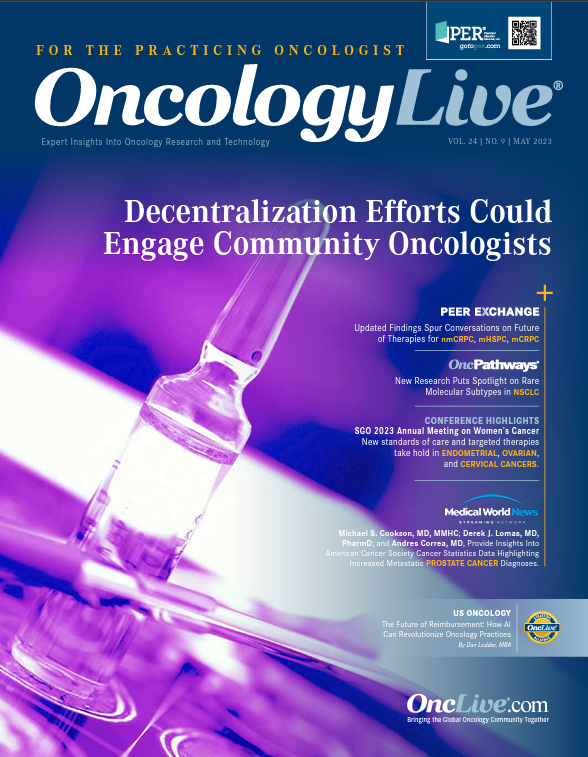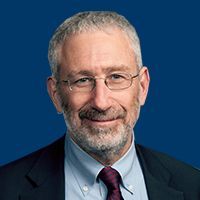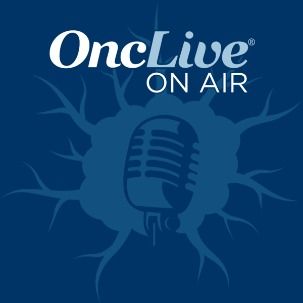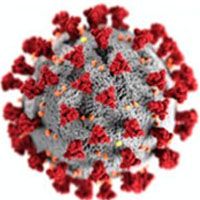Publication
Article
Oncology Live®
Decentralization Efforts Could Engage Community Oncologists
Author(s):
As more treatment options enter the oncology landscape, access to these life-changing medicines has become a paramount concern.
Paul G. Kluetz, MD

Drug development of the modern era is night and day different than what it was 2 decades ago. The scope of oncologic drugs has narrowed as more targetable markers come into focus, and trials face participant recruitment and diversity issues. Additionally, the rise of digital health technology, coupled with increased patient access to information, has changed the way patients and clinicians interact in shared decision-making. As more treatment options enter the landscape, access to these life-changing medicines has become a paramount concern.1
Three years after the start of the COVID-19 pandemic, the US public health emergency declaration is set to expire May 11, 2023, and clinical operations have all but returned to normal.2 One tangential outcome of the pandemic was the response to keeping clinical trials on track for patients enrolled in studies with on-site protocols.
“The clinical landscape is very different…. There’s much more shared decision-making, there’s a lot more conversation going on between the physician and patient, and we know with the internet that patients have access to much more information—they’re more informed and know that alternative clinical trials are out there,” Paul G. Kluetz, MD, said in a panel presentation during the 2023 American Association for Cancer Research Annual Meeting in April.1 “This is all good, but what has this done with respect to challenges in contemporary drug development? We know that there can be accrual challenges because there [are] many oncology trials ongoing—often in the same disease setting…. A big issue that’s being discussed widely is this lack of representativeness with respect to race, ethnicity, and age.”
Kluetz, who is deputy director of the Oncology Center of Excellence at the FDA, noted that issues with retention have been affected by patient access to information and open-label trial design. As double-blind trials have slipped out of protocol standards, patients who know they have been randomly assigned to control arms may search for alternative trials or expanded access programs. “It’s incumbent upon us all to make trials more patient-friendly so that we can decrease the [patient] burden and potentially mitigate some of these challenges. What can we do to design trials that are more efficient, less burdensome to patients, and more accessible to those living far away from clinical trial sites?” Kluetz said.
Deconstruction Leads to Decentralization
Kluetz said that deconstructing trial design, which began in earnest at the FDA in the past decade, has been the first step to modernizing master protocols. In 2021, the American Society of Clinical Oncology (ASCO) and Friends of Cancer Research issued recommendations for the modernization of clinical trial eligibility, access, and representation.3 The organizations focused on restrictive barriers to access, including prior therapies and the associated washout periods, laboratory testing intervals, performance status, and concomitant medications. According to investigators, arbitrary barriers such as age diminish the goal of reflecting real-world study populations.3
Additionally, the initiation and conduct of the Pragmatica-Lung trial (NCT05633602) was cited as one of the “proof-of-principle” studies by lowering barriers to entry.4 The phase 3 trial evaluated ramucirumab (Cyramza) plus pembrolizumab (Keytruda) vs standard of care for the treatment of patients with stage IV or recurrent non–small cell lung cancer following treatment with immunotherapy and chemotherapy. The trial did not include exclusion criteria such as poor performance status or require extensive laboratory testing prior to enrollment.
Kluetz noted that this is design is not a 1-size-fits-all approach, but rather something to consider when the setting is more important than the performance status of the population (eg, patients with advanced cancer who have been through standard-of-care treatments) to expand access to life-changing medicines.
In addition to the eligibility criteria, data sourcing has presented hurdles to efficient trial conduct. Kluetz noted that there are efforts looking into ways to leverage technology to extract data from case report forms as a means to provide another data source for realworld evidence. “[There’s] excitement about real-world evidence as one possible source of evidence and data, but just because you’re obtaining something from the EHR [electronic health record] doesn’t mean you can’t [also] bullet in [data from] a prospective randomized clinical trial,” Kluetz said. The FDA has several guidance documents under consideration for real-world evidence.5
Master protocols, adaptive designs, common controls, expanded eligibility criteria, integration of digital health technology—each of these elements represents 1 or more opportunities to decentralize element of trials that may break down barriers to trial access.
COVID-19 Changed the Rules of the Game
To keep oncology trials on course during the pandemic, several aspects of clinical trials were placed under the microscope because stay-athome orders and enhanced safety protocols were in direct conflict with trial protocol.
“We know that in response to the pandemic, and with the help of the FDA guidance, sponsors did incorporate various degrees of decentralization in oncology trials,” explained Timil Patel, MD, a medical oncologist and clinical reviewer in the Division of Oncology 3 at the FDA, which is responsible for drug development in gastrointestinal cancers and melanoma. “Decentralization refers to when some or all trial-related activities are occurring at locations other than the traditional investigator site. Examples of these other locations can include the patient’s home or a local clinic or imaging center. In oncology, it’s going to be unlikely to have a fully decentralized trial because of the complex nature of the disease and the treatments involved. It’s fair to say, when we use the term decentralized clinical trials, what we really mean is a hybrid trial. One example of a hybrid model is where a patient receives the investigational therapy at the main cancer center, and subsequent follow-up visits are done by telemedicine at home.”
Since March 2020, the FDA has issued guidance documents for the conduct of clinical trials for medical properties aimed at providing adapted protocols for industry, investigators, and reviewers.6,7 These documents allowed sponsors to continue and initiate new trials during the public health emergency and included recommendations such as considering patient safety to be of paramount importance. For example, the guidance noted that alternative assessments such as local laboratory visits or phone consultations could be leveraged to avoid in-clinic visits.5 The guidance document contained sections relevant to postmarketing requirements, remote assessments, and more.6
“We know that some of these trials that were run in a hybrid fashion during the pandemic were completed and led to an FDA approval,” Patel said. “This provides a proof of concept that not only can decentralized trials and these elements be deployed, but also that the data generated can be suitable for an FDA review and approval.”
Although the public health emergency expires in May, the guidance for clinical trials has received a 180-day extension to allow for further review and revision.6 During the presentation, the panelists noted that many of the changes made during the height of the pandemic were born out of necessity; however, they led to some intriguing data analyses that showed the value for patients and investigators seeking standard-of-care treatments in a decentralized fashion.
One example was a single-arm hybrid study (NCT04395508) evaluating the administration of a fixed-dose subcutaneous or intravenous (IV) administration of pertuzumab (Perjeta) and trastuzumab (Herceptin) for patients with HER2-positive early or metastatic breast cancer.8
In an analysis of preference obtained via questionnaire, 73.5% of patients with early breast cancer (n = 34) preferred administration via subcutaneous injection vs norma IV because the amount of time required is shorter (47.4%). Among patients with metastatic breast cancer (n = 9) these rates were 44.4% and 40.0%. Preferred location of administration was at home for 94.1% of patients with early breast cancer and 66.7% of patients with metastatic disease. The main reason for at-home preference was general convenience (43.8% and 50.0%, respectively), and more patients with early breast cancer cited reduction of risk of COVID-19 infection (23.4%) than those with metastatic disease (12.5%) as another reason for location preference.8
Of note, no new safety signals were reported with the at-home administration, with 2 instances of grade 1 injection-site reaction recorded. Among 16 patients who opted to enroll in a substudy of cardiac surveillance via artificial intelligence–based technology, 93.3% felt comfortable or very comfortable using the device, and 81.3% of nurses on these cases found obtaining heart images easy or very easy.8
Despite early signals of success, adding elements of decentralization is not suitable nor appropriate for all trials, Patel said. “Whether decentralized assessments are appropriate in a given trial is going to be context dependent: What is the disease? What treatments are involved? How complex are the remote assessments being deployed?” he noted. For example, e-consent, local laboratory blood draws, and local imaging assessments may be easier to implement than connected devices or direct-to-participant shipping of therapeutics.
Ramya Thota, MD, a hematologist/oncologist with Intermountain Healthcare in Murray, Utah, described a scenario in which switching patient medications during the pandemic using FDA guidance was a success. “During COVID-19, we learned things that we could never do before were possible,” she said. Prior to the pandemic, a patient who was receiving standard-of-care treatment (not part of a trial) at a local site 5 miles from her home vs 200 miles from the clinical site was successfully monitored via telehealth. The patient had disease progression, so enrollment in a clinical trial of an FDA-approved agent was the next step; however, the closest trial site was more than 250 miles away.
“Three months into the clinical trial, COVID19 happened and we got a lot of guidance, thanks to the FDA and sponsors,” Thota said. Because the agent was approved and drug safety regarding shipping was not an issue, the patient was able to receive the agent off-site. “We were able to move all the labs, imaging, [and] treatment assessments locally, and ship the IV drug [and] deliver it via telemedicine,” Thota said. “… Having built that rapport with my patient, it went as smoothly as before, and we haven’t had any deviations regarding the decentralized elements that I found were easy to implement.” She cited e-consent, local laboratory visits in the same health system, and imaging as successful elements.
“The biggest challenge or the deviations that as an investigator I was worried about were the shipping of the [intraperitoneal injection] and the drug accountability—who takes accountability? Is a pharmacist going be able to mix it properly?” Thota said. “Are they going to give the study drug? Or will they give the normal drug? And will that lead to deviations or increase anxiety? It did bring in some regulatory challenges as well. Because during COVID-19 there was a workforce crisis, with many individuals not coming to work. So the number of paper documents that we have to sign off, the number of regulatory [items] we have to deal with has been challenging. But have we done it? Is it feasible? Is it safe? Yes.”
Regarding the workforce crisis, the panelists acknowledged that staff turnover, especially research coordinators, has led to form maintenance and tracking issues. This issue spotlights how something that appears simple on a surface level—eg, filing a form—is a barrier to decentralizing elements of a study.
From a patient perspective, Alicia Staley, MS, MBA, who went through cancer treatment during the pandemic and is vice president of patient engagement at Medidata, said that telemedicine makes sense and that patients are adaptable to new protocols. “Patients are willing to participate in telemedicine, they’re willing to participate in this delivery mechanism of a clinical trial. We’re used to it now,” she said. “I’m finding that as a patient I’m questioning why, if I’m just having a quick check-in as part of my follow-up care with my oncologist, we can’t move that to telehealth…. So we’re starting to think about these things as standard operating procedures for clinical research. [During the pandemic] patients were very resilient and willing to do whatever it was going to take to make sure that their trial experience could stay moving forward.”
Looking to the Future in the Community
Staley noted that she is frequently asked how protocols can be made more patient-friendly. “Let’s call on some of these decentralized technologies to make it easier for the patient to stay engaged,” she said. “It’s one thing to go through the entire workflow to get a patient into a trial. It’s a travesty when a patient drops out. After you’ve spent all that time and energy getting them engaged in the trial and to find out that driving to the site was too overwhelming, or they didn’t understand the time and the impact it was going to have on their day-to-day life, that’s where we need to be stepping in and asking what solutions we have that we can start to dispatch and help these patients get through this experience in a much more comprehensive, empathetic way.”
Modernization relies on a variety of factors, but overall, Kluetz noted that during the pandemic no new regulations were issued or written. All the elements of decentralization that occurred were things that could have been instituted. The pandemic provided clarity on what could work and areas that need more refinement.
“It’s not an all-or-nothing situation,” Patel said. “The appropriateness of each type of decentralized clinical trial modification will depend on the clinical and treatment context. Remote assessments are on a continuum of risk and complexity. We need to think about how the trial and treatment context affect the feasibility and appropriateness of these various elements. [For example,] a first-in-human trial would be very different than a randomized trial of 2 FDA-approved agents.” Craig Lipset, cochair of the Decentralized Trials & Research Alliance, noted that community oncologists have a huge stake in the pursuit of these approaches. “The positions the [FDA] has put out are so essential for this research community that has a gravitational pull to become conservative and cautious and risk averse—in many cases for very good reasons. They need to hear these messages from the regulators.”
Echoing Kluetz, Lipset noted that the guidance put out during the pandemic only highlighted what was already possible. “No bar was changed when it came to safety or data integrity,” he said. “The FDA didn’t give permission to slack. They simply called out tools and methods that were already available that [hadn’t been] adopted.”
Lipset added that the outlier in effectively decentralizing any element of the trial is getting sites to speak the same digital language. “We need to take into consideration that investigators may not know [the patient] or the electronic health record platform. Our strategies for how we bring patient [data] into that trial when there’s increased distance between the patient and the site [includes having] to think about smart ways to empower patients to connect and share data,” he said.
Community oncologists are set to reap the most benefit for their patients by engaging with cutting-edge research via decentralized tactics. “The part of this story that I’m really excited about is our new ways to engage with community oncologists where research isn’t taking place,” Lipset said. “The idea of stimulating referrals into research is something we talk about and can occasionally point to examples [of it happening]. But for many researchers, study [referrals] are unicorns. With decentralization…oncologists in the community can host study visits, research can be brought to communities without [individuals] feeling threatened that it means patients [must be sent] to a distant academic medical center. We could bring community investigators into trials using video and other strategies [so] patients are obtaining care locally in the community.”
Awareness of ongoing initiatives from the FDA, Friends of Cancer Research, and other organizations is a vital part of ensuring that all patients have a voice in the development of cancer therapeutics. Although incentives play a huge role in getting the ball rolling for study sites and trial access, the panelists noted that sometimes getting buy-in on initiatives can be as easy as asking: “Why?”
“Everyone responds to incentives, and if there are no incentives, then we go with the least burdensome path or the path that we’re most familiar with,” Shaalan Beg, MD, MBA, vice president of oncology at Science 37, said. “I think about diversity action plans, which are a wonderful example of incentives and a structure set up by the FDA that is modifying behavior. This model can be applied for decentralized clinical trials just by [implementing] simple steps that ask the question of why a decentralized clinical trial may not have been deployed in certain situations…. There is a syndrome called the ‘not my study syndrome,’ which we have experienced where this is cool stuff—but not on my study. How do we get over that hump?”
Asking questions pertaining to the master protocols is a first step, according to Beg, who added that if questions from the sponsor, from the FDA, are not asked, then it will be easy to revert to the way things were.
References
- Modernizing clinical trial conduct and evidence generation: advancing decentralized oncology trials. Presented at: AAR 2023 Annual Meeting; April 11-14, 2023; Orlando, FL.
- COVID-19 Public Health Emergency (PHE). US Department of Health and Human Services. Updated April 14, 2023. Accessed April 23, 2023. bit.ly/3NfYNnH
- Osarogiagbon RU, Vega DM, Fashoyin-Aje L, et al. Modernizing clinical trial eligibility criteria: recommendations of the ASCO–Friends of Cancer Research prior therapies work group. Clin Cancer Res. 2021;27(9):2408-2415. doi:10.1158/1078-0432.CCR-20-3854
- Ramucirumab plus pembrolizumab vs usual care for treatment of stage IV or recurrent non-small cell lung cancer following immunotherapy, Pragmatica-Lung study. ClinicalTrials.gov. Updated April 19, 2023. Accessed April 24, 2023. https://clinicaltrials.gov/ct2/show/NCT05633602
- Real-world evidence. FDA. Updated February 5, 2023. Accessed April 24, 2023. bit.ly/3LpTQHr
- FDA guidance on conduct of clinical trials of medical products during the COVID-19 public health emergency. FDA. Updated April 11, 2023. Accessed April 24, 2023. bit.ly/3L6YPvr
- Department of Health and Human Services. Guidance documents related tocoronavirus disease 2019 (COVID–19). FDA, Human Health Services. March 13, 2023. 15417-15422. Accessed April 24, 2023. https://www.govinfo.gov/content/pkg/FR-2023-03-13/pdf/2023-05094.pdf
- Dang CT, Tolaney SM, Riaz F, et al. Preliminary analysis of an expanded access study of the fixed-dose combination of pertuzumab (P) and trastuzumab (H) for subcutaneous injection (PH FDC SC) for at-home administration (admin) in patients (pts) with HER2-positive (HER2+) breast cancer (BC) during the COVID-19 pandemic. J Clin Oncol. 2022;40(suppl 16):1515. doi:10.1200/JCO.2022.40.16_suppl.1515










